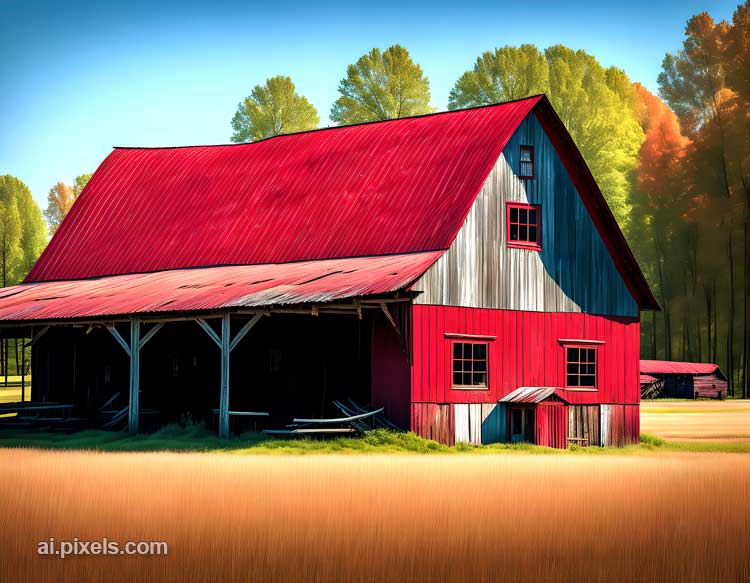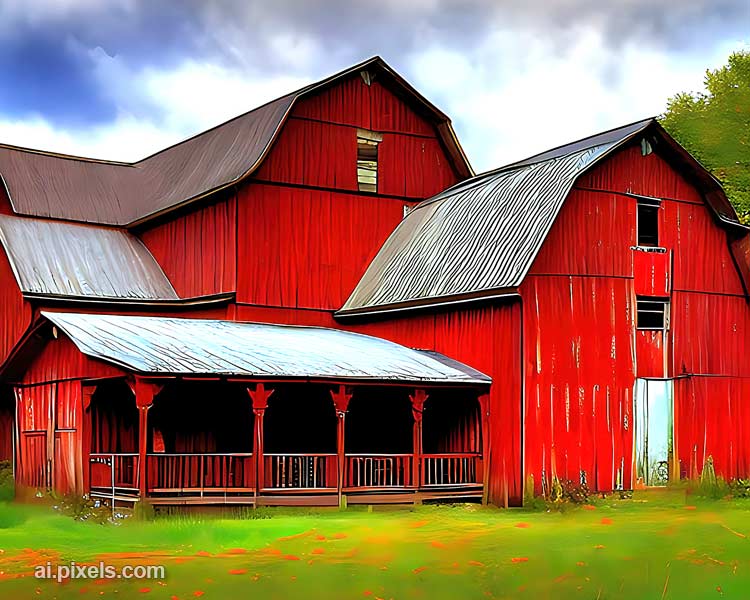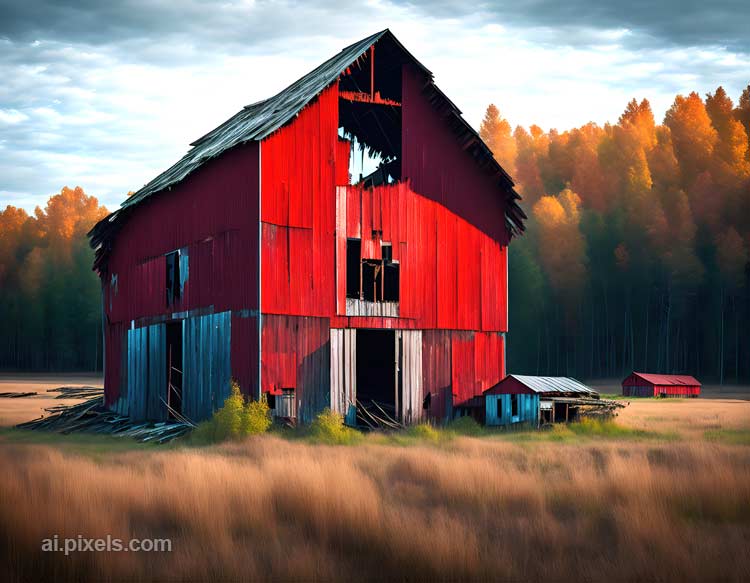It’s a shame that such an important piece of history has been left to decay into obscurity.
Note: This is an adventure into AI image creation and AI narrative development.
Foggy Forest & Gristmill
The abandoned gristmill in a foggy forest is a sight to behold. The eerie atmosphere that the misty surroundings provide adds to the mystery of the place. The towering trees and the thick vegetation that surround the gristmill give it an isolated and forgotten feel, like it has been left untouched for centuries.

As you approach this once-thriving mill, you can’t help but feel transported back in time. It’s as if you’re walking into a scene from an old fantasy movie or novel. The moss-covered stones and rusted metalwork only add to its charm and antiquity.
The sound of water rushing through the nearby stream provides a calming background noise as you explore every nook and cranny of the mill. Even though it may no longer be operational, there’s still something captivating about seeing these old machines up close – reminders of our industrial past slowly being reclaimed by nature.
History of the Mill
The history of the abandoned gristmill in the foggy forest dates back to the early 1800s. The mill was built by a group of settlers who aimed to establish a self-sufficient community in the area. The mill was initially used for grinding grains such as wheat, rye, and corn that were grown locally.
Over time, as technology advanced, newer and more efficient mills were built in nearby towns. As a result, the demand for grain from this particular mill declined steadily. Eventually, the gristmill was abandoned and left to decay in the dense forest.
Despite its current state of disrepair, visitors can still catch glimpses of what once made this gristmill an important part of local history. From its ingenious design to its remarkable durability over centuries of use and neglect, this historic landmark is an enduring reminder of what life was like for early settlers who sought to build thriving communities out of nothing but their own hard work and ingenuity.
Abandonment & Decay
As you walk through the dense forest, the fog envelopes you in its misty embrace. You hear the distant sound of water rushing and follow it to a clearing, where an abandoned gristmill stands decrepit and worn. The structure has clearly seen better days, its wooden beams creaking under the weight of time and neglect.
You approach cautiously, drawn by a sense of curiosity mixed with trepidation. The wheels that once churned with life now lay motionless and rusted. The silence is deafening as you contemplate the history that took place within these walls – the farmers who brought their grain to be ground into flour, the families who relied on this mill to survive.
Nature has begun to reclaim what was once hers, vines wrapping around pillars and roots pushing up through cracks in the stone foundation. As you take one last look before departing from this forgotten place, you can’t help but feel a sense of melancholy for something lost forever in time’s unrelenting march forward.
Exploring the Ruins
As I walked through the dense fog, the ruins of the abandoned gristmill slowly came into view. The moss-covered walls and creaky wooden beams stood as a testament to its former glory. Despite being left to decay for decades, there was a certain beauty in the way nature had taken over. Plants sprouted from every possible crevice and vines climbed up the walls.
As I explored deeper into the ruins, I couldn’t help but feel a sense of awe at how much history lay before me. The old machinery still stood in place, rusted and worn down by time. It was easy to imagine what life must have been like for those who worked here many years ago.
Despite being surrounded by decay and abandonment, there was an undeniable sense of tranquility within these ruins. It was as though time had stopped here, allowing me to immerse myself in this forgotten piece of history without any distractions or interruptions. Exploring these ruins reminded me that even in decay, there is often beauty to be found if one takes the time to look for it.

Mysteries of the Mill
As you walk deeper into the foggy forest, a looming structure catches your eye. An abandoned gristmill stands before you, still and silent as if it’s been frozen in time. The mysteries of the mill are immediately apparent – why was it abandoned? Who built it and when? What happened to the people who worked here?
The worn wooden boards that make up the exterior of the mill are weathered and aged, their once vibrant colors now faded to a dull gray. The windows stare back at you like empty eyes, offering no clues to what lies within. As you peek through one of them, you notice that cobwebs have taken over every inch of space inside.
It’s hard to imagine this place in its prime – bustling with activity as the sound of grinding wheat filled every corner. But now, all that remains is an eerie silence and a sense of mystery that hangs thick in the air. As you continue exploring around the mill, you can’t help but feel drawn deeper into its enigma – wanting to uncover more about its history and secrets.
Local Legends
The abandoned gristmill in the foggy forest is said to be the home of a local legend. According to the folklore, a young girl was working at the gristmill when she fell into one of the gears and was crushed to death. Locals believe that her spirit still haunts the area, and many have reported seeing her ghostly figure wandering around the mill.
Despite its eerie reputation, people are drawn to this site out of curiosity and fascination with local legends. Some even claim to have had supernatural experiences while exploring the old mill. However, visitors are urged to respect this historic landmark and refrain from any disrespectful or destructive behavior.
Overall, local legends like this one add an element of mystery and intrigue to our communities. They serve as reminders of our rich history and keep us connected to our past in a unique way that cannot be replicated by textbooks or documentaries.
Conclusion: Glimpse into Past
As I gazed upon the abandoned gristmill nestled in the foggy forest, I couldn’t help but feel a sense of nostalgia wash over me. The crumbling bricks and rotting wood transported me back to a time when mills like this one were the lifeline of rural communities. Back then, this gristmill would have been bustling with activity – farmers bringing their grains to be milled into flour and local bakers picking up sacks of freshly ground flour for their daily bread.
It’s a shame that such an important piece of history has been left to rot away in obscurity. As I explored the dilapidated interior, my mind wandered to all the stories and secrets that must be hidden within these walls. Who were the people that built this mill? What struggles did they face? And why was it abandoned in the first place?
Despite its current state of disrepair, there is still something magical about this abandoned gristmill. It serves as a reminder of our past and reminds us to appreciate the advancements we’ve made while also honoring those who came before us – those who paved the way for progress.
Of course, the above images are available as prints, wall art and on a variety of home decor items. Where in you home will you put one of these?
Link: Abandoned Gristmill in the Fog
Link: Abandoned Gristmill in the Forest




